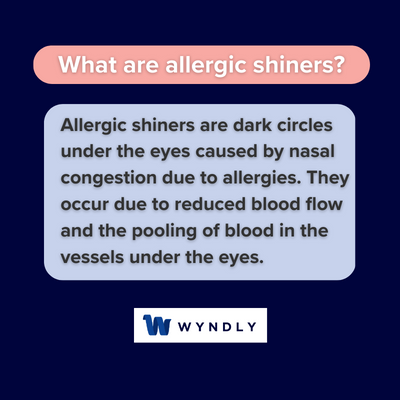What Are Allergic Shiners? Defining Allergic Shiners

What are allergic shiners?
Allergic shiners are dark circles under the eyes that can be a sign of allergies. They occur because of swelling and fluid buildup caused by an allergic reaction.
How do allergic shiners develop?
Allergic shiners develop when the body experiences an allergic reaction, causing swelling and fluid buildup in the tissues under the eyes.
What are the common symptoms of allergic shiners?
Common symptoms of allergic shiners include dark circles under the eyes, swelling and puffiness, itching and redness, and general discomfort.
Can allergic shiners be treated?
Yes, allergic shiners can be treated through various methods such as allergy medications, home remedies, and lifestyle changes. Your doctor can help you determine the best course of action.
How can you prevent allergic shiners?
You can prevent allergic shiners by identifying and avoiding allergens, taking allergy medications, and managing your stress levels. A healthy diet and lifestyle can also help reduce the risk of allergic reactions.
What are the causes of allergic shiners?
The main cause of allergic shiners is an allergic reaction, which can result in swelling and fluid buildup in the tissues under the eyes, leading to dark circles.
Are allergic shiners a symptom of a serious condition?
Allergic shiners can be a sign of allergies or a sinus infection, but are rarely a sign of something more severe. It is important to speak with a doctor if you are concerned about your symptoms.
How can allergic shiners be differentiated from normal dark circles under the eyes?
Normal dark circles under the eyes are usually caused by genetics or lack of sleep, while allergic shiners are caused by an allergic reaction and may also be accompanied by swelling and puffiness.
Are allergic shiners more common in certain age groups or populations?
Allergic reactions can occur at any age and in any population, so allergic shiners can affect anyone. However, certain populations may be more prone to allergies, such as those with a family history of allergies or those with a weakened immune system.




